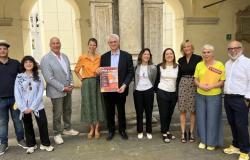2023 data from the European photovoltaic BESS market
They are called in jargon BESSacronym for Battery Energy Storage Systems, i.e Battery Energy Storage Systems. And they represent one of the fundamental elements to ensure flexibility to the network with the progressive penetration of photovoltaic and wind power. SolarPower Europe is keeping an eye on its growth and released a new report on June 12 2023 trend for solar battery storage. The document shows how last year in Europe the photovoltaic BESS market installed well 17.2 GWh of new storage capacityreaching a total cumulative capacity of 35.9 GWh.
Segment analysis
In parallel with the trend affecting solar, the growth of the photovoltaic BESS market was mainly driven by residential segment as a response to expensive bill of these years. The domestic segment in Europe has “turned on” 12 GWh of stationary battery storage in 2023, equal to 70% of total added capacity. The promising (but still under-exploited) commercial and industrial (C&I) battery segment contributed 1.6 GWh (9%) while grid-scale batteries contributed a new 3.6 GWh (21%).
Summing up at the end of last year, in the Old Continent, the total operational BESS fleet was concentrated: 63% in the Residential segment, 27% in the Utility-scale segment and 10% in the Commercial and Industrial (C&I) segment .
Battery storage systems: Past and future trends
For the sector, those 17.2 GWh of additions in 2023 represent an increase on an annual basis of 94%, i.e. almost double the 2022 value. This is not an isolated episode, but rather the third year of exponential growth. An entirely positive trend born in conjunction with the fossil energy crisis and that isn’t expected to stop anytime soon. At least with the right political and regulatory stimuli. In fact, the association estimates that BESS markets will maintain theirs upward trajectory between 2025 and 2028, with sustained growth rates (although slower than the last two years) of between 30 and 40%. “The overall BESS capacity installed in Europe is expected to increase more than sevenfold to achieve 260 GWh of battery storage by 2028“, writes SolarPower Europe.
Photovoltaic Batteries, the top 5 European markets
Some European countries have contributed more than others to this “energy relay”. In detail, on the podium we find Germany, Italy and the United Kingdom. The German photovoltaic battery storage market maintained its leading position, putting 5.9 GWh into operation in 2023, equal to an annual increase of 152%. The Nice village he followed closely by scoring his own national record: 3.7 GWh of photovoltaic BESS installed (plus 86% on 2022). Great Britain, on the other hand, stood out with 2.7 GWh of batteries in stationary storage (up 91%). In the top five the picture is completed byAustria with 1 GWh of battery storage systems added annually and the Czech Republic with 900 MWh.
BESS Photovoltaics, Italy is the 2nd European market
In terms of total cumulative capacity, Italy does not lose its position. Today with 6.5 GWh of photovoltaic batteries installed in total, it is the second largest European market for BESS. Thanks to the residential segment which alone supplied 3.1 GWh, i.e. 84% of the capacity added in 2023. Obviously the strong performance of domestic battery storage systems is mainly due to the introduction of the Super bonus 110% in 2020.
However, if we talk about Utility-scale BESS, there is no shortage of difficulties, as SolarPower Europe explains. “Despite being one of the most attractive markets in Europe – thanks to the opening of important revenue streams, capacity auctions, ambitious storage targets and the strong penetration of renewable energy requiring flexibility – the segment did not take off in 2023. Delays in projects have affected the implementation of large batteries, and the postponement of the record year of installation in Italy to 2024.”.
The challenges to be solved
“Over the past decade, declining investment costs for battery storage, driven by technological advances, economies of scale and lower commodity prices, have improved […] the cost competitiveness of solar photovoltaic combined with BESS“, commented Antonio Arruebo, market analyst at SolarPower Europe. “This combination already represents an optimal solution to address our energy trilemma of security, sustainability and affordability.” However, now that the effects of the energy crisis have subsided, the convenience of investing in self-sufficiency may appear less evident.
Download HERE the report on the photovoltaic BESS market.
Read also Global battery market, from record 2023 to future growth







